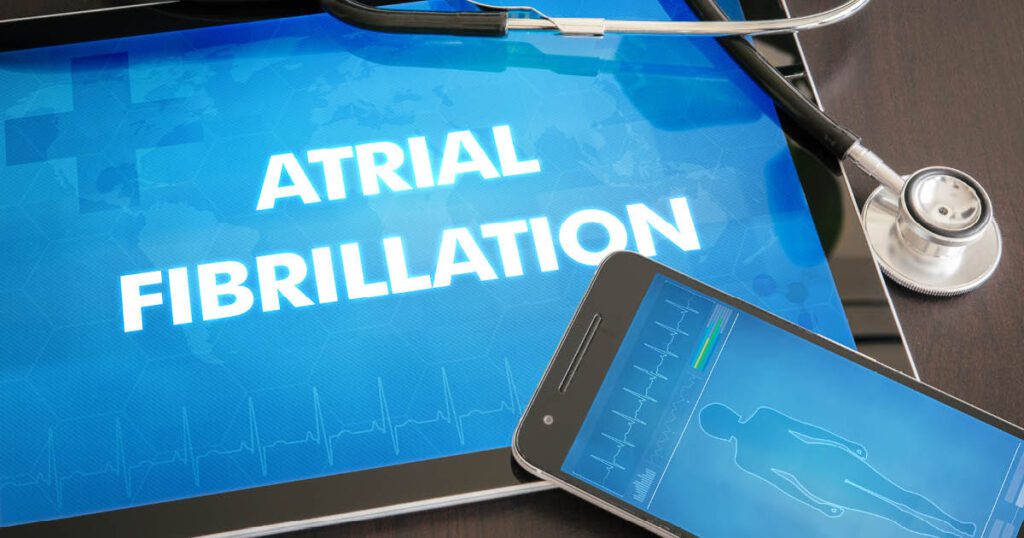March 31, 2025
3 min read
Key takeaways:
- For patients with obesity and atrial fibrillation, catheter ablation was the best strategy to prevent AF recurrence.
- Lifestyle modification plus antiarrhythmic drugs improved metabolic and functional metrics.
CHICAGO — For patients with atrial fibrillation and obesity, lifestyle modification plus antiarrhythmic drug therapy conferred various benefits but was inferior to catheter ablation for preventing recurrent AF, researchers reported.
For the PRAGUE-25 trial, presented at the American College of Cardiology Scientific Session, Pavel Osmancik, MD, PhD, from Cardiocenter, Third Faculty of Medicine, Charles University Prague and University Hospital Královské Vinohrady in Prague, and colleagues randomly assigned 203 patients with AF and obesity (mean age, 60 years; 68% men) to lifestyle modification plus an antiarrhythmic drug regimen or catheter ablation.

For patients with obesity and atrial fibrillation, catheter ablation was the best strategy to prevent AF recurrence. Image: Adobe Stock
Obesity common in AF
“Obesity is a very important risk factor for atrial fibrillation and is very prevalent in all trials assessing the effect of catheter ablation and antiarrhythmic drugs in AF treatment,” Osmancik said during a presentation. “The median BMI in the most recent trials is 30 kg/m2. That means half of the patients in these trials are obese. As we know from nonrandomized studies, weight loss was effective in obese patients and was associated with less AF recurrence. Not only weight loss, but reduction in alcohol consumption and an increase in physical activity. Therefore, we hypothesized that in obese patients lifestyle modification will significantly augment and increase the effect of antiarrhythmic drugs, and this combination … could be noninferior to catheter ablation.”
Patients assigned catheter ablation had their procedure within 6 weeks of randomization and underwent pulmonary vein isolation (with additional ablation in some patients with nonparoxysmal AF) using radiofrequency or pulsed-field energy, Osmancik said during the presentation.
Patients assigned lifestyle modification plus an antiarrhythmic drug regimen received a targeted weight-loss and exercise program administered by dietary specialists and physiotherapists, diet consultation (including cessation of alcohol consumption) with nutritionists, regular in-person and phone consultations and a choice of antiarrhythmic drugs during the first months after randomization (class IC drugs were preferred), Osmancik said.
“A lot of patients were not happy if they were randomized to catheter ablation,” Osmancik said during the presentation. “They agreed to be randomized, but they described they would be happier to be randomized to the lifestyle arm. Many of them told us they would try to lose weight on their own, with help from nutrition specialists.”
One patient in the catheter ablation group crossed over, but the others underwent the procedure. One patient had a major complication (transient ischemic attack) during their procedure, whereas 7% of patients required redo ablations and 16% started antiarrhythmic drugs due to AF recurrences, Osmancik said. The group had no change in body weight.
The lifestyle modification group lost an average of 6.37 kg at 12 months (P < .001), which was sustained at 24 months (–6.29 kg; P < .001), he said. At 12 months, 66.7% of patients were still taking antiarrhythmic drugs, and 25 patients in the group eventually received catheter ablation, 23 of them after AF recurrence, Osmancik said.
There were four major complications in the lifestyle modification group — three cases of syncope and one sudden cardiac death — according to the researchers.
Catheter ablation superior for AF prevention
The primary outcome of freedom from AF at 12 months occurred in 73% (95% CI, 64.3%-81.7%) of the catheter ablation group compared with 34.6% (95% CI, 25.3%-43.9%) of the lifestyle modification group, which meant noninferiority was not met (P for noninferiority = .999; P for superiority of catheter ablation < .001), Osmancik said.
The catheter ablation group had reduced AF burden, reduced N-terminal pro-B-type natriuretic peptide and improved quality of life but increased HbA1c, whereas the lifestyle modification group had improved quality of life and reduced HbA1c, triglycerides, C-reactive protein, peak oxygen consumption, AF burden and NT-proBNP, Osmancik said.
“The lifestyle modification program was associated with significant metabolic and functional improvements with a decrease in AF burden,” Osmancik said during the presentation. “However, with regard to sinus rhythm maintenance, a strategy based on lifestyle modification and antiarrhythmic drugs was inferior to catheter ablation.”
During a discussant presentation, Kalyanam Shivkumar, MD, PhD, FACC, professor of medicine at the University of California, Los Angeles, and director of the Center for Interventional Programs at UCLA Health, said: “The management strategy that the study really highlights is, what if you use catheter ablation as an initial strategy to maintain sinus rhythm? Which is a clinically important question, because people who have come to the point of wanting lifestyle management are now impacted by the symptomatic nature of their arrhythmia. [The study] shows superiority of using catheter ablation as an initial approach.”

